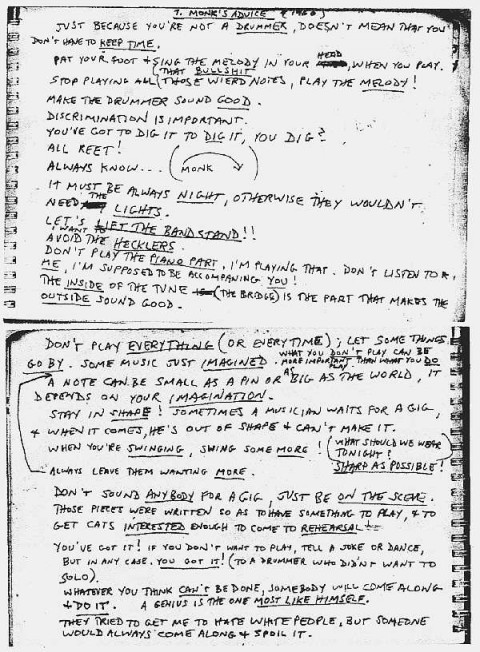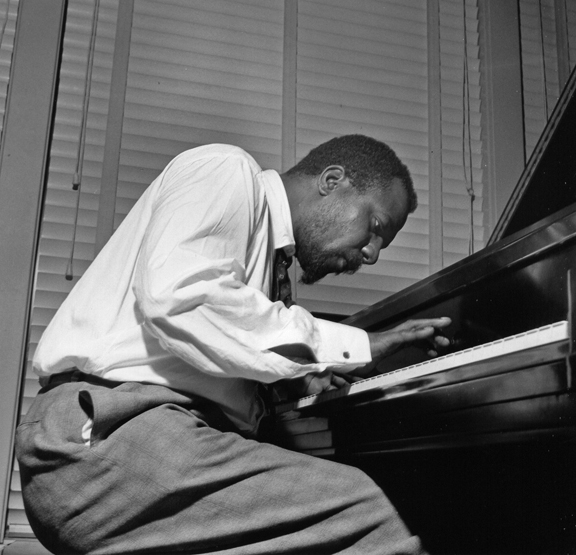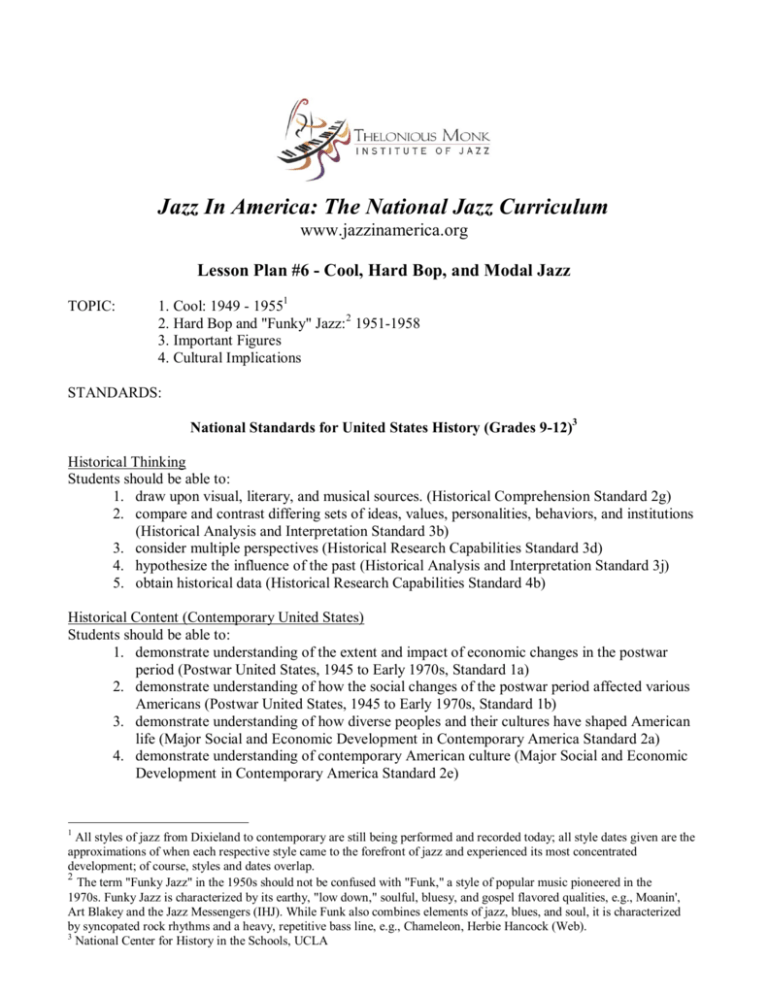
The NRBQ mantra exists throughout the performance.take a well-known piece of music (like Glenn Miller's "In The Mood") and demonstrate how the piece is so durable that it can be played in any fashion and still retain its original spiritual intent. "Monk's Mood" is provided a lengthy solo piano introduction before Hoke doubles on the harmonica and pedal steel guitar to produce one of the most singular and original Monk performances since Monk himself. Adams trade notes with Hoke in the improvised exposition before Ligon enters to bring on the coda with just enough tremolo to recall Hank Williams, Sr. Adams give a high-school styled piano solo that is if you went the UC Berkeley for high school. Hoke solos on alto and is doubled by Klem Klimek's tenor saxophone. Again Ligon recasts the piece with an electric guitar sound from somewhere between 1940 and far-west Texas. Again, Adams starts straight, if not a bit stilted before relaxing into a walking bass pattern. The first stand out is "In Walked Bud," Monk's homage to colleague and pal, Bud Powell. Scott Ligon's guitar is hard country swing, jangly and twangy and Jim Hoke's alto is potent and boozy.

"Hornin' In" begins like a Monk piece and transforms into a rockabilly-western swing exposition of Monk as heard through a glass of absinthe. The "wow" factor is eleven on a scale of ten. Adams strolls through three choruses of the piece on the organ before switching to the standard piano trio to show approximately the song was supposed to sound like. Adams retains and accentuates Monkian quirks and burps with a certain sly reverence. This is Monk somewhere between church and the 1950s soundtrack of The Edge of Night. Adams' invention here is inspired and sheer genius). The pipe organ.nothing as vulgar as the Hammond B-3 (not that there is anything wrong with the Hammond. He opens the recital with Monk's "Reflections," played on the pipe organ. Which is exactly what Adams does in this (mostly) live performance recorded at the Flynn Space, Burlington, VT, on April 5, 2012.

That attention is the fourth necessary element to a five-start recording, the invention with which the performing artist transforms the familiar into something else. And, gratefully, Adams leaves that one alone, concentrating on the lesser known compositions to give a wide variety of attention to. So we need one more performance of "'Round Midnight?" Well, it would have to be original and novel. While he performed with the bebop leaders of the day, Monk himself was redefining jazz in a whole new way, one that made his music sound foreign but exhilarating.Ī major pitfall to Monk's repertoire is how much it has been stepped on, by other musicians and himself, since the notes transferred from his fingers to the piano. He just happened to be making his music at the same time Charlie Parker and Dizzy Gillespie were changing American Music from the ground up. Christened the "High Priest of Bebop," it was neither his chops nor his compositions that made him "bebop.' It was his visionary spirit. Monk's music is so identifiable and iconoclastic of bristling creativity that he inhabits a category unto himself. Together with the current incarnation of the NRBQ, Adams combines musicians and instruments, rhythms and tempi not typically associated with Monk, bringing us to the second and third elements of a five-star disc, repertoire and interpretation. The idea of a Monk disc has been percolating since.for nearly 50 years. So many, in fact, that Monk's close friend and benefactor Baroness Pannonica de Koenigarter noticed and befriended him remaining his friend until her death in 1988. When Adams came to New York City in 1967, during the NRBQ formation, he had the opportunity to attend many Thelonious Monk performances. Today, Adams is the only remaining member of the original group.Īdams, who was born in the Baby Boom of 1948, stretches his arms out and embraces much of the past, which he translated into the present, and anticipated the future. Founded in 1967 by multi-instrumentalist Terry Adams, the band had its most stable and notable line-up between 19, including bassist Joey Spampinato, guitarist Al Anderson, and drummer Tom Ardolino. Never a stadium act, NRBQ has staked out for the past 50 years the responsibility of cataloguing, performing, combining, transmogrifying, and nuclear translating our native brands of music.


Musician and AAJ contributor Skip Heller calls the New Rhythm and Blues Quartet (NRBQ), "the greatest band of all time." A listen to the band's catalog reveals a depth and breadth of material that betrays an omnivorous appreciation of all American Music, all with a wicked and acute sense-of-humor, something so much music lacks.


 0 kommentar(er)
0 kommentar(er)
